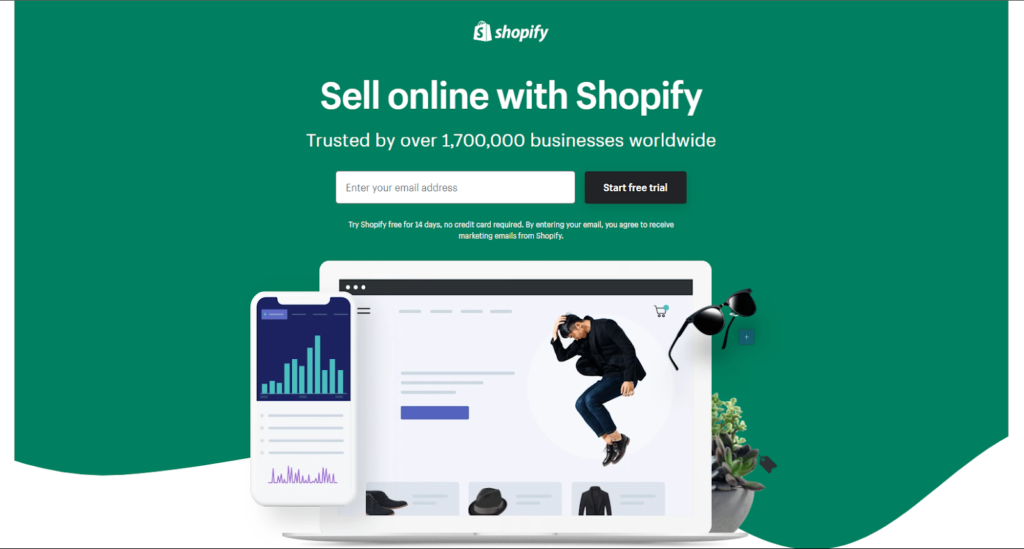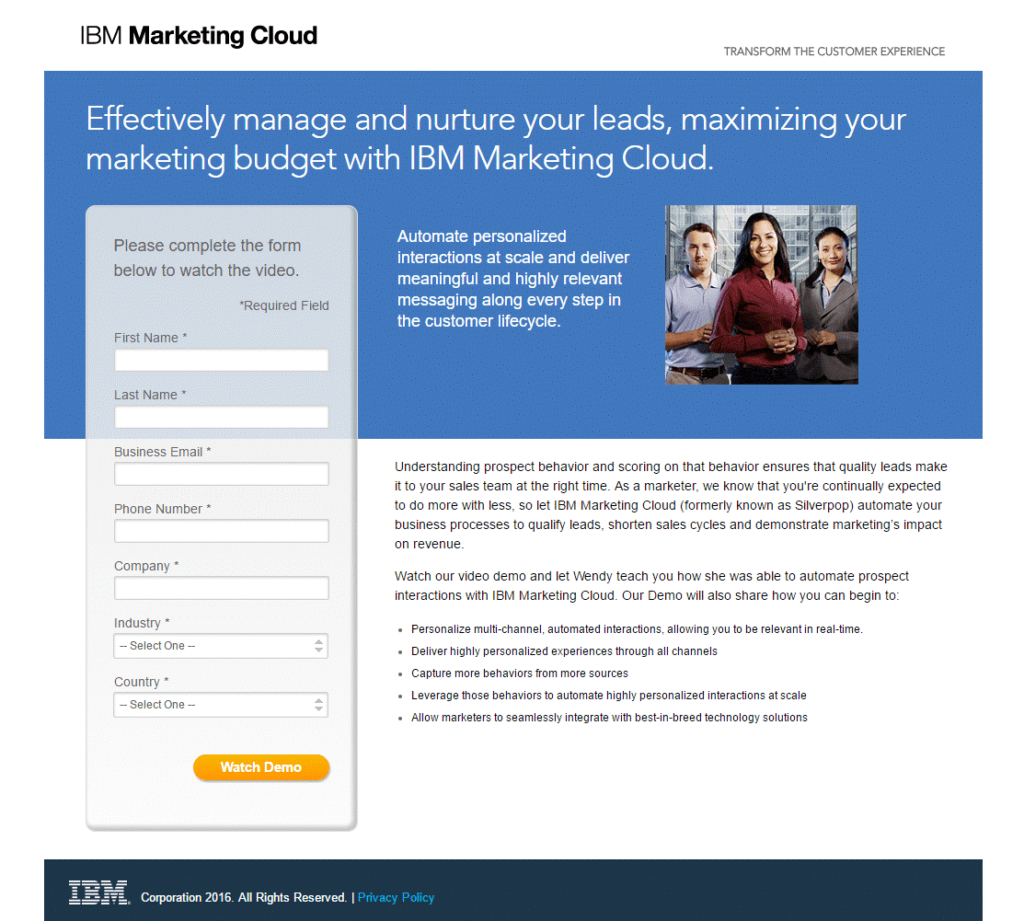Features your landing pages should have
As a member of a marketing team, your day is packed out. One minute you’re replying to an offensive post about your brand on Twitter and the very next moment, you’re jumping into PowerPoint to style an important document. In between, you’re also expected to build a marketing campaign that takes in new clients.
With so much going on at one time, you have to make sure that—whatsoever you’re working on you get it. That’s why it is compulsory to have highly innovative landing pages that can convert your visitors into customers.
In the world of digital marketing, a landing page is specifically a web page that a visitor arrives at after clicking on a search result link or an online ad. Also acknowledged as a lead capture page or destination page, a landing page is expensed to generate sales or leads by getting users to retort to a call-to-action (CTA). An efficacious landing page is augmented to drive conversions getting more visitors to take the anticipated action. A CTA linked to content is a crucial element for SEO success.
A landing page comprises a very precise goal, that is “conversions”. It’s where your visitors will land after snapping on a link on your social media post, website, or a reference on your podcast. The typical landing page suggest a free offering and lets your visitors sign up for it.
Consequently, a landing page develop leads into customers, which makes them a fundamental element of your marketing strategy. If your landing page reverberated exclusively with the needs and demands of your audience, they will be far more likely to convert your visitors into customers. No matter if you run a SaaS PPC agency, or you have big e-commerce business, or you are a person with a simple website, landing pages are an vital part of your digital marketing strategy.
It’s important to discriminate between a landing page and a home page.
A home page display and demonstrate your brand. It let the visitors know about you, lets them explore your products, and offers supplementary information about your business and its values.
From the homepage, a user can go wherever, but they won’t certainly fill out a sign-up form or do a purchase. On the other hand, a landing page is there to convert visitors into customers.
Each of landing pages has a different call to action, a different reader, a different niche, a different service or product to promote. There is a great amount of difference among purpose, intent, niche, perception, audience, product, angle, industry, testimonial approach, cost, focus, messaging, buy-in, shipping method, and many other factors.
Nevertheless, there are also some distinctive characteristics that you should keep in mind while working on your landing pages.
The main factor of an operational and profitable landing page are:
Headlines matter the most:
The headline of the landing page is the very first thing user will see. Because of this, it is important that it defines very distinctly what a visitor will get from the page. The message has to be precise and strong enough to captivate the attention of the user and keep them on your page. Your finest headline should promote interest, understanding, and concentration.
Make sure the heading on your landing page is more than enough to captivate the user’s attention, fully inform the user what your service or product you are providing and, make sure it is short, if possible try to make it ten words and not more than twenty

It is requisite to add a secondary headline. The secondary headline can be a direct extension of the leading headline, succeeding it like a finishing sentence, or it can be a supplementary influencing message that supports the main one. This secondary headline needs to be very convincing and persuasive.
If your main headline seizes the attention of the user on your landing page, then the influencing sub-headline should persuade them to stay. frequently, the sub-headline is placed directly beneath the main headline and it goes into some extent of more depth and detail.
Unique Value Proposition (UVP) crafting:
The unique value proposition is a proclamation that defines what discriminates against your product and gives you a verge over your competitors.
Start from the main point. you target audience! What is their point of interest? How does your service or product can help them? What do your users need to read and see in order to be persuaded to choose you?

Tell your viewers what the inducement is and what it is going to provide. You have to work constantly and steadily. People should instantly grasp the concept of your business.
Describe your point of view on HOW your service or product will lead your customers to their preferred result.
It may sound like a lot of work to do but brevity is a fundamental part here, so it’s important not to devastate with the copy. If your unique value proposition is not powerful or clear, your users will bounce off.
Make benefits a motivation:
On landing pages, it is excellent to keep your users focused by restraining a lot of stuff. A landing page typically has no sidebar and no menu bar. Make sure you make it a standalone page, and it comprises promptly deliver the feeling that your users are in the right place and they don’t have to browse further.
Define the problem, how can you solve it and the results that you extract. reduce the possibility of an interference. You have to check this again and again to make sure that your landing page hasn’t drifted from your goal or your landing page aligns with your new goals.
If someone has to make decision again and again, and if there are a lot of distractions or disruption in your landing page, the more likely you’ll lose them, particularly if they’re new. Thinks about offering a gift or discount with a retreating timeframe to inspire a quicker conversion.

Another important feature, particularly for small businesses, is to practice the local language on their landing pages. Moreover, localize your landing page if you service visitors that cannot speak English. It’s authentic, and it’s a nice way to keep people on the page.
Make your landing page reachable for people with impairments or health conditions if they’re part of your viewers. Make sure the text contrast isn’t feeble, and choose a readable font that is perceptive and makes it stress-free for them to read and navigate your landing page.
The whole point of this conversation is you have to focus on your audience, not search engines. Your copy must reverberate with your user’s problems for you to be able to deliver the best possible solution.
Images or Video Context is your key partner!

This is the graphical demonstration of your offer and has the role of helping users to understand what your offer is or what it
looks like in a good way. Showing context of use rather than telling has a maximum effect. Get your users to imagine themselves in a scenario and empathize with how they are using it. In order to gain this result, you can use videos or photos.
If you chose to use pictures, they should be high-quality, large, and relevant to your service. Exclusively, when you are selling a product it is important to incorporate on your landing page an image of the product. But, when you are selling a service, the image should describe the usefulness of your service and captivate the attention of your users.
Proof your worth socially!

Social proof can be very helpful. By using social proof, you exemplify that people have purchased what you are offering. Users are more likely to convert into consumers if they see that others have used your offer before them. You can use social proof on your landing page by giving a count of the number of signups, by utilizing social signals from public networks, displaying honors from reputable and trustworthy organizations, or by using some customer reviews and customer testimonials.
Statistics of your trust indications:
Willing customers should be capable to trust your brand before they decide to convert on your proposal. That’s why integrating trust pointers to augment credibility is important to your post-click landing page framework.
Getting your users to convert frequently depends on on providing statistical proof on how your service is the answer to their problem. The proof is best showed in the headline or sub-headline. When you use this method, don’t forget to enter the source that created the proof.
Show your worth with Third-party seals
Third-party seals let your users know that you are professional and working with you is safe and profitable, and their information will not be compromised or shared.

Rejection of exit links
post-click landing pages are intended to engross on pages so there shouldn’t be any type of external links present.
When you include links to pages, you’re inviting users to leave your page without converting.

The closing argument
As your landing page comes to a close, you have one last chance to show the benefit of your services or products. before your user is ready to obligate and ready to do their business deals with you, they need that absolute assurance that they’re making the beneficial move.
You can alleviate their disquiets by ending your page with one of the finest copywriting or you can take help from a clear call-to-action that closes the loop of your USP narrative.



